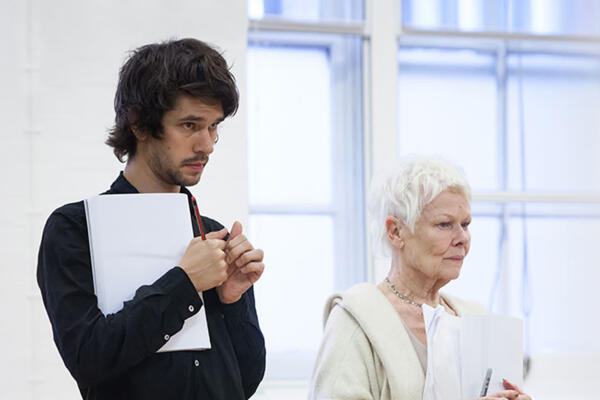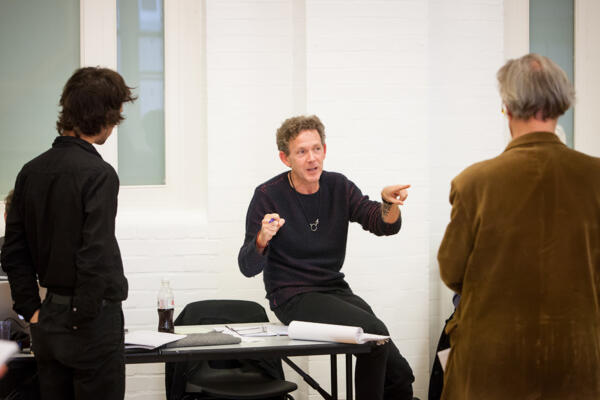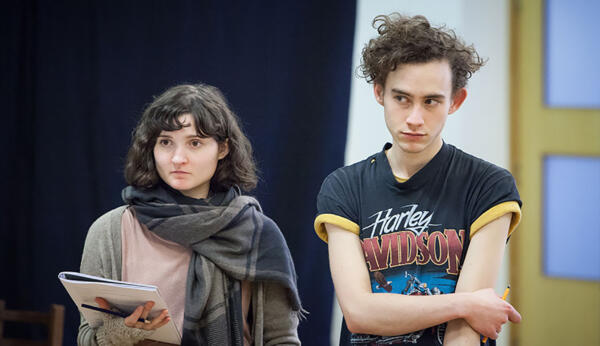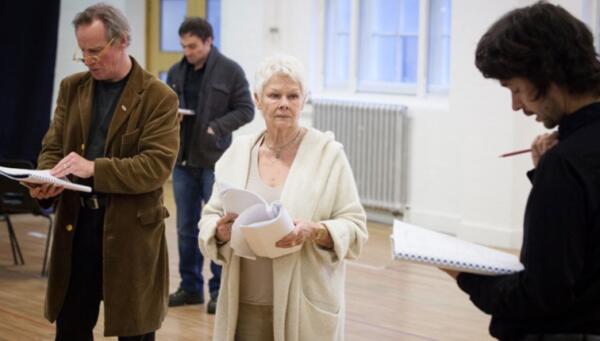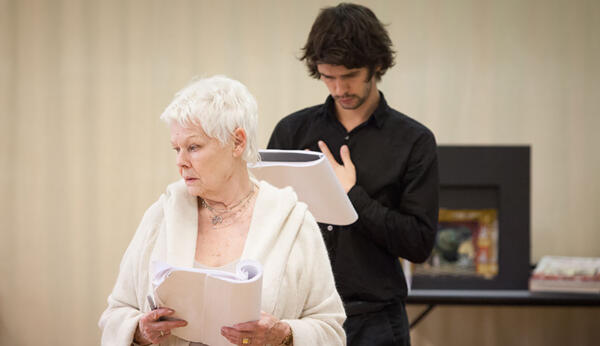Peter and Alice | Inside the Rehearsal Room
Peter and Alice– Week One, Day One
Education Associate Dominic Francis provides an insight into the cast and Creative Team’s rehearsal process for Peter and Alice
The first day of rehearsals for all the productions in the Michael Grandage Company’s opening season start with a ‘Meet and Greet’, an opportunity for everyone involved – cast and creative team – to meet one another. Standing in a circle, people take it in turns to introduce themselves, saying their name and role on the production.
Artistic Director Michael Grandage welcomes everyone, highlighting the importance of the occasion – the first day on the making of a brand new play. He hands over to designer Christopher Oram, who presents the model-box. The design has several ‘reveals’ that Michael asks everyone to keep secret.
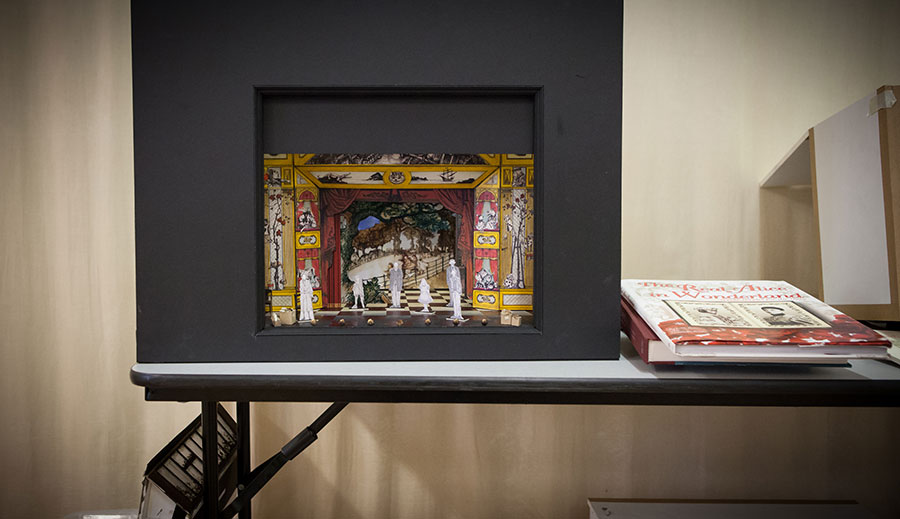
Staging the play completely within the bookshop, the main location, had been considered, but Michael and Christopher wanted to release the characters into a larger world. Referring to the play’s source material – Alice in Wonderland by Lewis Carroll and JM Barrie’s Peter Pan – Christopher comments: ‘Both books are a journey from reality to fantasy.’ Early on he wants a suggestion of something strange entering the real world – for example, the silhouette of a rabbit’s ears flitting across the frosted glass of the bookshop door.
Christopher and Michael refer to the ‘remarkable illustrations’ in both books – John Tenniel’s in Alice and Arthur Rackham’s in Peter. These were an enormous source of inspiration to the design, Christopher eventually settling on the idea of a full-scale toy theatre as a metaphor for childhood. This will include large cut-out pieces, flown in and out, against backdrops depicting everything from a country house to ‘No Man’s Land’. The backdrops will be a combination of illustrations and period etchings.
A member of the cast asks the inevitable question: Will the fictitious Peter fly? ‘Yes’ is the answer – or at least, that’s the plan. ‘So obviously it’s going to be quite a big tech!’ says Michael. He comments on the challenge of creating such a magical world within the confines of a rehearsal room, with just a mark-up on the floor.
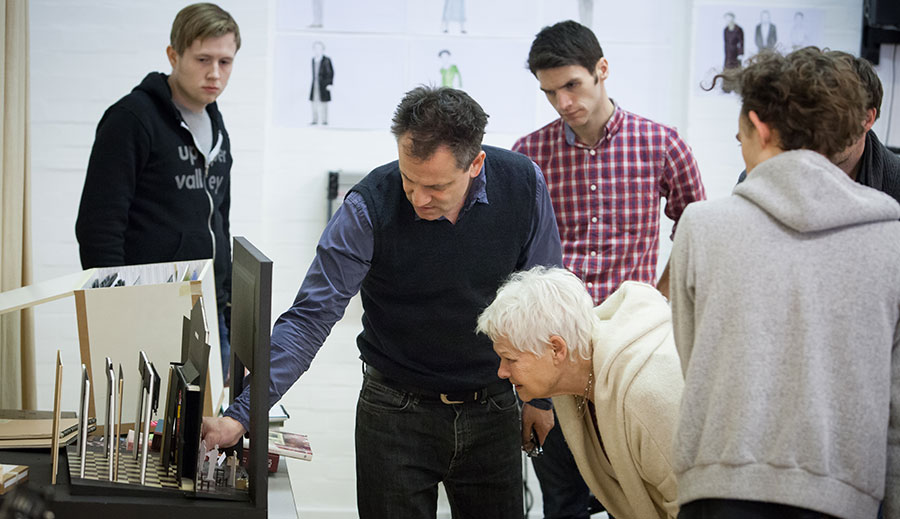
Author John Logan is present throughout the first week of rehearsals, returning in the fifth and final week before previews begin. He talks briefly about the origins of Peter and Alice, for which he first had the idea twenty years ago, although he didn’t actually start writing the play until 2010. John prefaces his comments by saying: ‘There’s no such thing as a frivolous play.’ But of Peter and Alice in particular he reveals: ‘I knew it would be an ordeal’. He might not have undertaken it without the support of Michael, following their successful collaboration on his previous play, Red, at the Donmar Warehouse. ‘I wasn’t going alone into the dark wood.’
The play discusses personal grief, suggests John. He reflects upon the desolation within it, highlighting the ‘scorched earth’ of the landscape – both physical and emotional – and the ashes of the characters’ lives. ‘It’s important how you balance that amount of grief and tragedy with comedy,’ he comments. ‘The juxtaposition.’
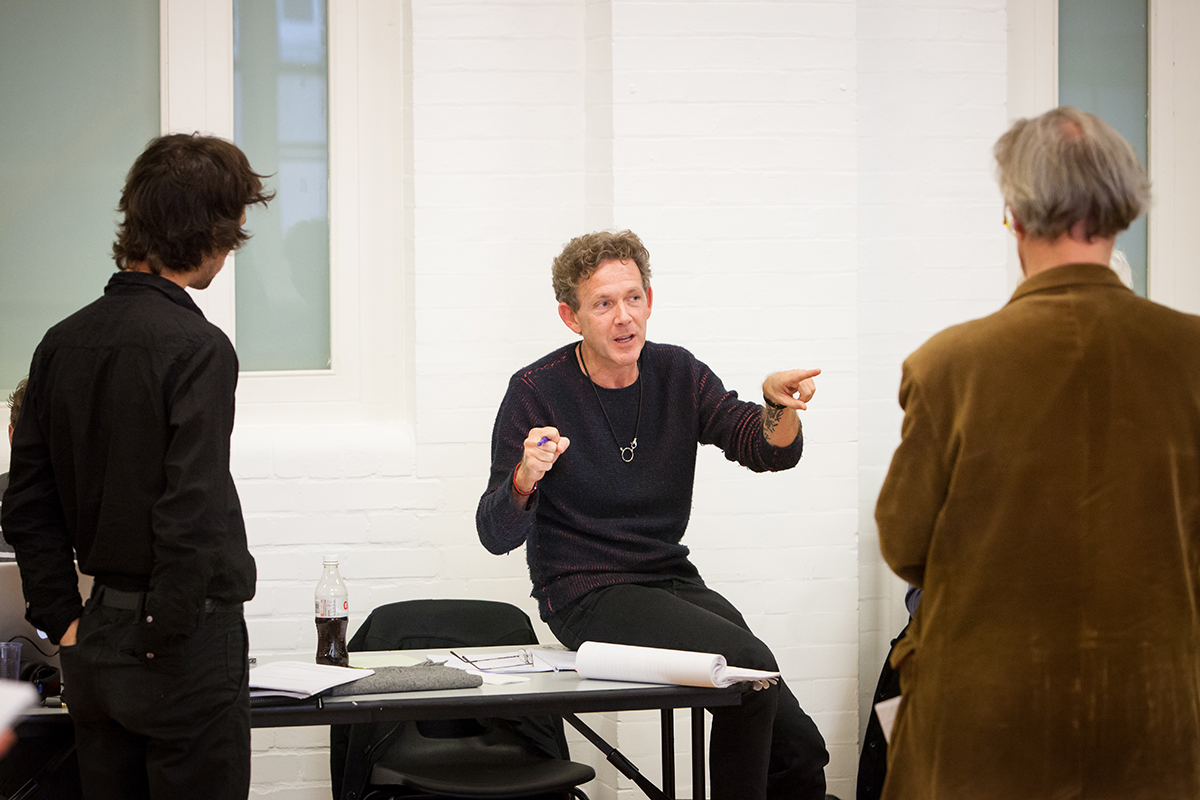
The tone, observes Michael, is found in the detail. ‘We need to be quite light tonally in rather a lot of it.’ He wonders how an audience will react and, more importantly, ‘Where they can be let in?’ Michael refers to the ‘Hah!’ moments in plays – that instance when they start to breathe. In Peter and Alice he focuses on ‘the fantastic moment of transformation within the story’ – the ‘click’ moment between the two protagonists. ‘The play begins by investigating these two characters,’ says Michael, ‘and then their worlds explode.’ For him Peter and Alice ultimately ‘offers up something for an audience to learn’. Through the experience of the play there are ‘opportunities to be quite analytical’ and he’s curious to know what the cast took from the piece.
There’s an opportunity for the actors to discuss their response to the play following a half-hour break, during which many of them are measured for their costumes – fittings will take place over the coming weeks. When the company reconvenes Christopher talks briefly about costuming the characters, referring to two worlds – the historical world and the fantasy one – and acknowledges the ‘archetypal depictions’ of both Peter Pan and Alice in Wonderland. For the real-life Peter’s costume he’s opted for a ‘non-matching outfit’: ‘A tweedy brown-shoe look rather than a black shoe one.’
The actors then discuss their research into the characters, a sharing of information. Michael takes a consistent view on this type of work: ‘Back story never killed anyone.’ He comments on the fact that the characters are based on living people, now deceased, and therefore there are real-life references. While Michael observes the need to ‘build a level of authenticity’, John highlights the fact that he has written a fiction: ‘It’s an act of story, not biography or reportage.’ The actors will ultimately create a ‘fictive’ world.
With regard to JM Barrie and the real-life ‘Lost Boys’, Michael poses the question: ‘How far did it go?’ The actors refer to various books they’ve read, biographies of both Barrie and Lewis Carroll, many of which contradict one another’s findings. ‘The truth is we don’t know what actually happened,’ comments Michael. ‘Therefore we have a blank canvas to make choices.’ John reflects on both authors: ‘A well-adjusted genius would never have written Peter Pan or Alice in Wonderland. Both characters are about anguished yearning.’ Michael refers to such characters in the play as ‘ghosts’. They’re on stage, in the picture, and therefore ‘have a view’ on what’s happening around them.
He outlines the structure of the working day, ten till four with an hour for lunch, before deciding how best to work it: ‘How this play will rehearse itself.’ ‘I tend to avoid table work,’ Michael explains, particularly for the benefit of those actors he hasn’t worked with before. ‘We’ll do it from the point of view of being up on our feet. We’ll get up early tomorrow and attempt to go through the whole play very soon to get a general shape. We’ll go away quite early, by the end of this week, with a sketch – a sense of spatial awareness with the words. It gives you greater ownership earlier.’
Michael wants the cast to enter the theatre confident, explaining that there are more previews for Peter and Alice than any other production in MGC’s opening season. One of the actors asks about the way in which the characters speak, prompting a discussion about the need for projection, to which Michael responds: ‘Celebrate the technique of being truthful while projecting.’ He discusses the need to make the transition to the theatre, resisting the temptation to ‘bring down’ the performances of the actors in weeks three and four of rehearsals.
The company then take a break for lunch, reconvening an hour later for the readthrough, sat around a table. It is timed at one and a quarter hours. Afterwards Michael congratulates everyone, saying it was good to hear all the characters together and describing the reading as a ‘wonderful springboard’. Referring to the tone of the piece, he comments: ‘Where there is tragedy, to my ears it was good when we didn’t play it tragically – didn’t colour it. It’s the old point about not playing the end at the beginning.’
Michael ends by saying he and John don’t want to make many changes to the text: ‘Maybe moments to cover transformations now we know the design.’ Minor revisions are discussed, mainly concerning American usage of English and pronunciation of characters’ names. Michael also observes the need for someone to come into rehearsals to teach the waltz and already begins asking questions of the play – for example, how long has Peter been waiting at the beginning? He concludes the first day’s rehearsal by telling the cast: ‘Every one of you is in the right place.’
